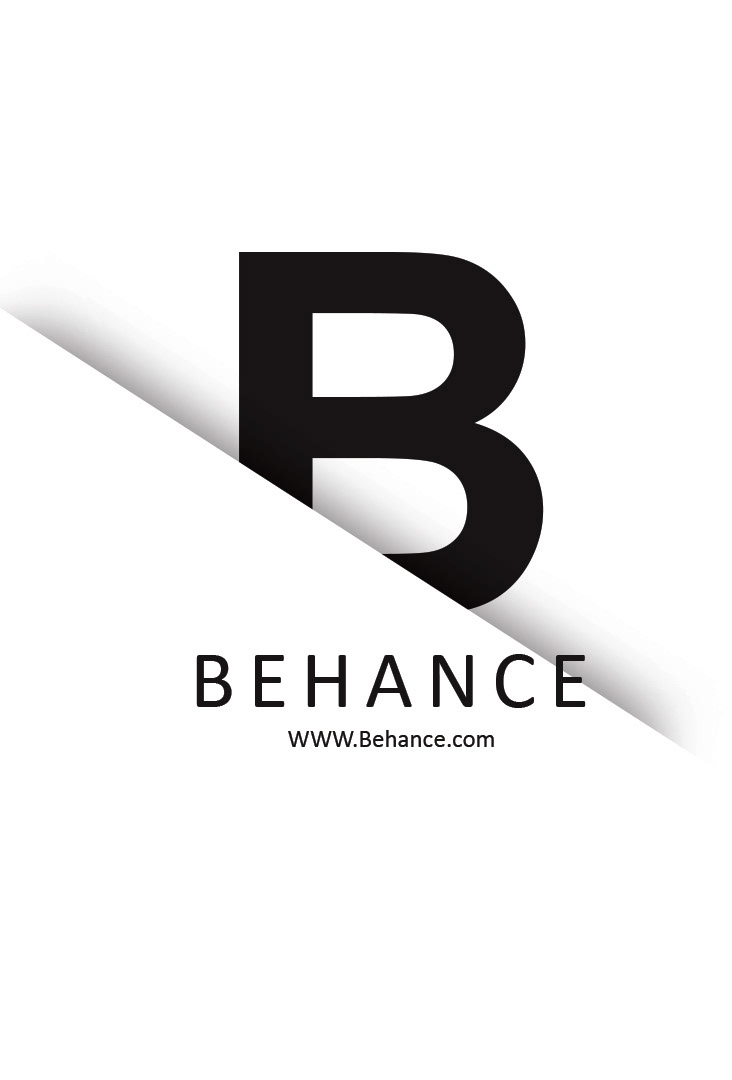Have you ever wondered where the name "Behance" comes from? This creative platform has transformed the way artists showcase their work and collaborate with others. In this post, we'll dive into the origins and evolution of Behance's name, exploring how it reflects the spirit of creativity and community. So, grab a cup of coffee, and let's embark on this exciting journey together!
The Early Days of Behance

Behance was founded in 2005 by Scott Belsky and Matias Corea, two passionate individuals who aimed to create a space for creative professionals to showcase their work. Originally, the concept was simple: a platform to help designers, artists, and other creatives manage and present their portfolios in an organized manner. The name "Behance" was born out of the desire to represent the idea of "enhancing" one's creative presence.
The word itself suggests action and improvement, aligning perfectly with the platform's mission. It was all about helping artists and designers take their work to the next level. In its early days, Behance focused on providing a clean, user-friendly interface that allowed creatives to upload their projects easily. This made it accessible for anyone, from seasoned professionals to fresh graduates.
Initially, the platform gained traction through word-of-mouth and community engagement. Artists and designers started to appreciate the benefits of having a dedicated space to showcase their work without the noise of social media. Instead of just “likes,” Behance empowered users to receive constructive feedback through comments and community interaction.
As more users joined, Behance established itself as a hub for creativity, where collaboration thrived. The founders understood that creativity wasn’t just about individual success; it was also about fostering a community. They integrated features that allowed users to follow each other, share projects, and even collaborate on new ideas, reinforcing the platform’s commitment to enhancing creative careers.
In those early days, Behance also emphasized the visual aspect of portfolios. Users could present their work in ways that highlighted their unique styles and processes. This focus on aesthetics helped Behance differentiate itself from other portfolio sites. It wasn’t just a place for static images; it was a vibrant showcase of creativity.
As the platform grew, so did its functionalities. Behance introduced projects and collections, allowing users to curate their work in meaningful ways. This evolution challenged creatives to present their art not just as isolated pieces but as part of a larger narrative. The name “Behance” perfectly encapsulated this evolution, suggesting that everyone could enhance their creative journeys together.
In summary, the early days of Behance were marked by a clear vision of enhancing creative presence and nurturing community. The name itself reflects this mission, making it more than just a brand; it became a movement that inspired countless individuals to pursue their passions and connect with like-minded creatives around the globe.
Also Read This: How to Effectively Manage Your Behance Profile and Eliminate Mood Boards
What Inspired the Name Behance?

The name Behance is more than just a catchy title; it embodies the core philosophy of the platform. Founded in 2006 by Scott Belsky and Matias Corea, the name was inspired by the idea of "enhancing" creativity. The creators wanted a name that reflected the mission of helping creative professionals showcase their talents and connect with others.
In addition to "enhance," the name also plays on the word "chance." This duality is significant because Behance offers artists and designers a chance to be discovered. It perfectly encapsulates the platform's essence: a place where creativity meets opportunity.
To dig a little deeper, let’s break down the core inspirations:
- Enhancement: The platform aims to enhance the visibility and reach of creative work.
- Chance: It offers a chance for creatives to be recognized and to network with peers and potential clients.
- Community: Behance fosters a sense of community among creatives, encouraging collaboration and support.
This naming approach was strategic, aiming to resonate with artists who desire not just to show off their work but to thrive within a community. The founders wanted a name that encouraged and motivated users, something that is evident in Behance’s branding and online presence.
So, next time you hear "Behance," remember that it's not just a name—it's a vision. It represents a commitment to enhancing the creative journey for all its users, making it a beacon for artists worldwide.
Also Read This: How to Build a Portfolio on Behance for Success
The Evolution of Behance Over the Years

Since its inception, Behance has undergone significant transformations, both in its functionality and its community. Initially starting as a simple portfolio platform, it has evolved into a comprehensive ecosystem for creatives.
Here’s a look at some key milestones in Behance's evolution:
- 2006: Behance launched as a portfolio site, aiming to provide a space for creative professionals to showcase their work.
- 2010: The introduction of Project Pages allowed users to create detailed presentations of their work, enhancing interactivity and engagement.
- 2013: Adobe acquired Behance, which led to further integration with Adobe Creative Cloud, making it easier for users to share their projects directly from Adobe applications.
- 2016: The launch of Behnce Live provided a live-streaming feature, allowing creatives to share their processes in real-time, fostering a more dynamic community.
- 2020: Behance expanded its focus on community engagement, introducing features like Creative Challenges to encourage collaboration and skill development among users.
Through these changes, Behance has maintained its commitment to supporting creatives. The platform has not only expanded its features but has also adapted to the changing landscape of digital creativity. It serves as a testament to how a platform can grow and evolve while staying true to its mission of enhancing creative opportunities.
Today, Behance is more than just a portfolio site; it’s a vibrant community where creatives from all over the world can connect, collaborate, and inspire each other. As it continues to evolve, we can expect even more exciting features that will further empower artists to showcase their work and reach new audiences.
Also Read This: How to Download Things from Behance
5. Behance's Impact on Creative Professionals
Behance has revolutionized the way creative professionals showcase their work and connect with potential clients. Before its inception, artists and designers often struggled to find a centralized platform to display their portfolios. Behance filled this gap, allowing creatives to not only share their projects but also receive feedback from peers and industry leaders.
One of the most significant impacts of Behance is the sense of community it fosters. Creatives from various disciplines — from graphic design and illustration to photography and motion graphics — come together, share ideas, and inspire one another. This interconnectedness has led to collaborations that might never have happened otherwise. For instance, a photographer might team up with a graphic designer they discovered on Behance, resulting in innovative projects that blend their unique skills.
Moreover, Behance has become a powerful tool for job seekers in the creative industry. Many companies now scout for talent directly on the platform, recognizing that a well-curated portfolio can speak volumes about a candidate's skills and style. This trend not only helps creatives land jobs but also elevates the overall standard of work in the industry. As a result, more artists are motivated to refine their craft and present their best selves online.
Additionally, Behance's integration with Adobe products has enhanced its utility for users. Creatives can seamlessly upload their work from Adobe Creative Cloud, making it easier to keep their portfolios updated. This integration also allows for quick sharing of projects across other social media platforms, amplifying exposure and reach.
To summarize, Behance has had a profound impact on creative professionals by:
- Providing a centralized platform for showcasing work
- Fostering a vibrant community for collaboration and inspiration
- Serving as a recruitment tool for companies seeking creative talent
- Integrating with Adobe products to streamline the sharing process
6. How Behance Stands Out in the Creative Network
In a sea of creative networking platforms, Behance stands out for several reasons. First and foremost, its focus on quality over quantity sets it apart. Unlike many platforms that prioritize user engagement metrics, Behance emphasizes the presentation and the craft of the work itself. This means that when you browse through projects, you’re more likely to encounter high-quality content that showcases true talent.
Another distinguishing factor is Behance's unique curation process. The platform features “Curated Galleries” where selected projects gain extra visibility. These galleries are curated by industry professionals, ensuring that the work displayed is not only visually striking but also impactful within the creative community. This element of curation adds an air of exclusivity and prestige to projects featured on the platform.
Behance also excels in its user-friendly interface. Navigating through projects is intuitive, allowing users to focus on appreciating the art rather than getting bogged down by complicated features. The platform's search functionality is robust, enabling users to find specific styles or artists quickly. Whether you’re looking for inspiration or a collaborator, finding what you need is a breeze.
Moreover, Behance continuously evolves to meet the needs of its users. Recent updates have included features like project analytics, which give creatives insights into how their work is being received. This data can be invaluable; understanding what resonates with audiences allows professionals to adapt and grow.
In conclusion, Behance distinguishes itself in the creative network by:
- Prioritizing quality content over engagement metrics
- Offering curated galleries for enhanced visibility
- Providing a user-friendly interface for easy navigation
- Evolving with features like project analytics for user growth
 admin
admin








